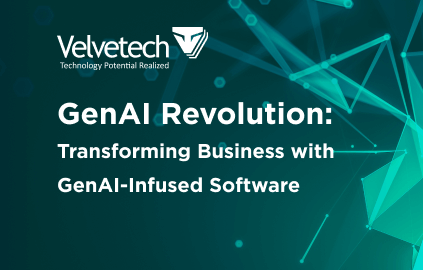Today companies are striving to get rid of manual workflows by all means, automating as many business processes as they can. And this is totally understandable in the conditions of fierce competition and incrementally rising costs.
Therefore, a more or less large-scale business lacking an ERP in any manifestation is a truly rare find. Depending on their needs and aspects needing automation, companies pack their ERPs with desired functionality. That’s why you’ll hardly find two absolutely identical systems — all because of disparities in workflows which inevitably entails differences in system components.
Here, we are approaching the finish line in our blog post series dedicated to ERP development. In this article, let’s speak about the functionality of such systems, why they can hardly be a single solution for all workflows, and the impact of AI on this class of software.
Features Without ERP Can’t Be Called an ERP
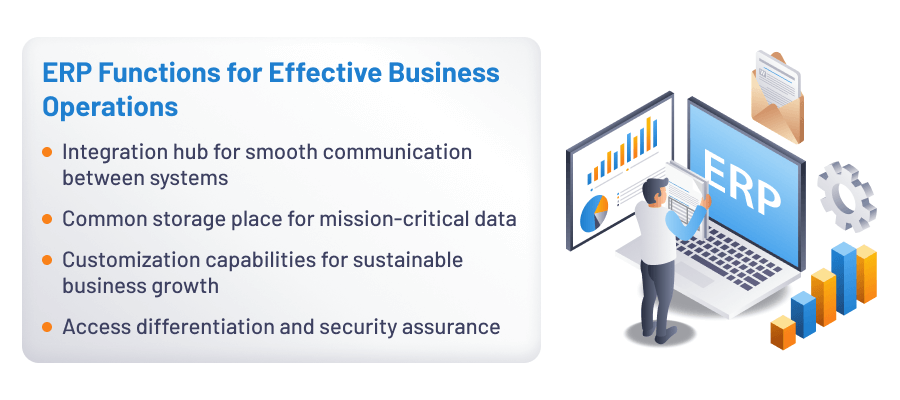
An ERP system is typically a comprehensive platform designed to automate key business processes. Agree, if software focuses solely on a single aspect, such as resource management, it can’t truly be considered an ERP — it’s simply a specialized solution rather than an all-encompassing system.
However, the first thing to understand is that there’s no one-size-fits-all set of ERP modules or subsystems. The structure of an ERP system depends on a company’s industry, scale, and specific needs. However, certain core domains are common across most businesses, including:
Financial Management – for accounting, budgeting, and financial reporting
Human Resources – for payroll, recruitment, and employee management
Customer Relationship Management – for sales, marketing, and customer support
Supply Chain & Vendor Management – for procurement, inventory, and supplier coordination
From a business perspective, these aspects are fundamental yet somewhat abstract, forming the backbone of large organizations. The specific features of an ERP system, however, vary based on industry requirements, operational needs, and business intricacies. That said, there are core technical functions that an ERP can perform across various industries. Let’s take a closer look at some of them.
ERP as an Integration Hub
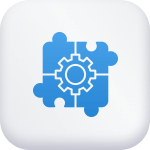
Agree, you can hardly imagine a large-scale company lacking the components of ERP listed above. Therefore, if we take such popular solutions as SAP or Oracle — both of them represent a so-called engine featuring a set of these basic functions, and you can also add desirable modules that are potentially integrable (within the system flexibility boundaries of course).
This raises the idea that an ERP system can function primarily as an integration hub, connecting all the software used within a company. For instance, an organization might have separate platforms for HR, CRM, logistics, and other processes. In such cases, the ERP itself isn’t directly accessed by users; instead, it operates in the background, facilitating seamless data exchange and validation between these systems. Essentially, this type of ERP acts as a central integration layer, often referred to as a headless ERP.
However, the definition hinges on scale. If only two systems are linked by a simple integration script, that setup hardly qualifies as an ERP ecosystem.
Learn Why ERP Integration Is a Non-Negotiable Advantage
ERP as a Unified Storage Place

At the moment we observe a tendency to use an ERP as a centralized data storage. Many clients show their willingness to aggregate their data in a data warehouse, and the software can perform this function successfully. Put simply, a company implements an ERP to have a unified space to store data from various systems and manage data in the most efficient way, including through AI capabilities.
Why is centralized storage so important? All because, advanced analytics and AI require seamless access to all components of your IT ecosystem. Using a data warehouse within an ERP system is far more efficient than relying on a DW built solely for reporting purposes.
Read about Enterprise Data Warehouse: Benefits, Types, and Trends
Customizability Means a Lot
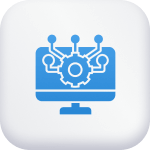
When introducing a multi-functional ERP with capabilities covering the vital aspects of your business, you expect it to serve faithfully for many years to come. Business, laws, requirements, and market conditions don’t stay still — everything is subject to change. This means that the system must keep pace, have a high level of agility, and be easily customizable.
Creation of new business processes, alteration of the existing ones, workflow adjustment — all these changes must be supported by your ERP system capabilities. This can be reached by different means, for example through a low-code/no-code solution which can be used as a basis for further development.
Access Differentiation & Security
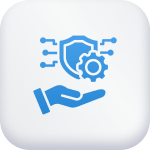
Access control is a fundamental enterprise resource planning feature that every system must have. Given the vast amount of sensitive data stored within an ERP — ranging from financial records and HR details to supply chain and customer information — restricting access based on roles and responsibilities is essential for security.
A robust access management system ensures that employees only have access to the data and functions necessary for their roles. This mitigates the risk of unauthorized access, reduces human errors, and ensures compliance with industry regulations like GDPR and HIPAA.
Another critical security aspect is audit and activity logging. For organizations in highly regulated industries like healthcare and finance, maintaining a detailed record of all system interactions is essential. Logs help track who accessed or modified data, when, and from where — ensuring accountability and simplifying compliance audits.
Grasping the Immensity. Can a One Single ERP Cover All Flows Within a Company?
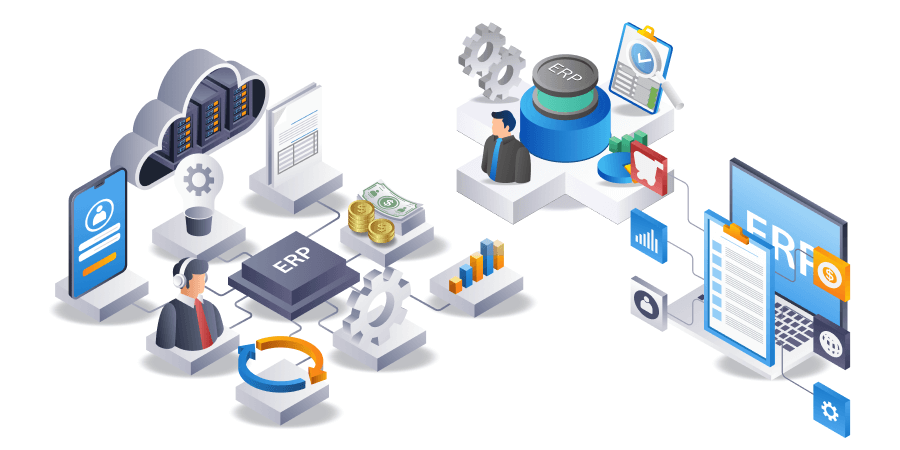
Packing an ERP system with all possible and impossible functions may seem to be a brilliant idea, however, it’s not always reasonable. Let’s review a simple example.
There is a company providing consulting services which counts 200 employees. One moment they decide that they are tired of toggling between different systems and intend to introduce software covering literally everything — marketing activities, project tracking, customer relations, and more.
Sure thing, in theory, it’s feasible. Meanwhile, there are some points that might turn out to be insurmountable obstacles to this idea implementation. Say, the company employees use Jira to interact with clients. As we remember, this aspect is also desired to be covered by a brand-new ERP, which means that company customers also will have to switch to another software. What do you think, will they be happy to abandon the good old and clear Jira and change it to an unfamiliar system with a completely new interface they have to get used to?
For a large-scale company, say, a bank counting 10,000 employees this could work, many clients and vendors would be willing to adapt to a new system. Perhaps, this replacement won’t cause an enthusiastic response. Meanwhile, they might not have another choice, since switching to another bank will be much more expensive and troublesome than adapting to a new system.
As for a small company, this trick will hardly work out. Smaller businesses typically don’t have the same leverage as large corporations, meaning clients and vendors are less likely to adapt to a new system just for their sake. If an ERP transition disrupts established workflows or requires additional effort from external stakeholders, they might simply choose to work with a competitor instead.
There is another reason why it’s better not to include this or that functionality in an ERP and use a separate specific software. Continuing with the example of a small company, they will hardly want to include an accounting module in their resource planning platform. Why so?
Because accounting processes are quite complex, so is the specific software that can’t be written once and left as is for years to come.
Such systems need continuous updating in compliance with newly issued rules and regulations, which makes maintenance a quite expensive pleasure. For these reasons, including this aspect in an ERP system is economically unprofitable and sometimes even not needed in general.
If your business is small and follows a predictable growth pattern, bookkeeping remains more or less straightforward. In such cases, building a complex accounting system that integrates with major departmental platforms may not be practical. Instead, using an off-the-shelf solution like QuickBooks can be a more cost-effective and rational choice.
Check out how we Implemented a CRM and Integrated with QuickBooks and Mail Server
However, the situation changes for larger organizations with 10,000+ employees and a dedicated accounting team of 20 or more. Relying on QuickBooks or similar software could become costly due to licensing fees. At this scale, developing a custom accounting module within your ERP system offers greater flexibility and long-term cost savings.
Explore Major Types of ERP Systems
Easier Said than Done. Most Troublesome Feature to Implement
Picturing a classic ERP, we usually imply office staff interacting with the system. Big comfortable screens, mouse, keyboards — standard equipment for efficient and convenient work, isn’t it? However, we should also keep in mind that ERP systems might be designed not only for white collars but also for those who work in the fields.
Designing ERP systems supporting functions for users who lack access to traditional equipment — or even a stable internet connection — is one of the biggest challenges in feature implementation. Field workers, factory operators, and technicians often require a different approach to usability compared to office-based employees.
Find out how we Created a Custom ERP System for a Construction Service Company
Let’s review one example from our practice. We helped our client operating in the oil and gas industry develop a reporting application. The main users were pumpers who entered data in the app through tablets. That’s why it was necessary to think out the interface carefully and make it usable for people working in thick gloves.
Entered data security, the possibility to save data in the offline mode, button size, and layout — it’s only a small fraction of aspects that are critical when building that sort of application. That’s why it’s important to pay them extra attention at all stages of development.
Will “Everything App” Conquer the World? Influence of AI on the ERP Market
Many speak about the concept of “everything app”, which implies that AI-based platforms may evolve into infinitely flexible comprehensive applications able to resolve any task. Partially, this has already happened, a conditional GhatGPT might successfully tackle simple tasks. For example, a platform converting one file format to another can be seamlessly replaced by an AI tool, and this brings some software companies offering such services to the brink of extinction.
Could this trend extend to the ERP market? There’s no definitive answer yet, but given the rapid advancement of AI, the possibility of AI-driven ERP systems is not far-fetched.
Today, we observe that AI is already deeply embedded in ERP platforms, helping with data analytics, automating workflows, and supporting decision-making. But could the very core of an ERP evolve into a dynamic AI module — one that businesses interact with instead of navigating complex interfaces? That remains an open question and one that the future will undoubtedly answer.
GenAI for Business
Watch our webinar to uncover how to integrate GenAI for improved productivity and decisions.
Concluding Lines
You’ll hardly find two identical ERP systems, even among businesses operating in the same industry with similar services. Every company has its own unique workflows, requirements, and operational nuances, which inevitably lead to differences in ERP functionality.
That’s why defining a universal set of ERP software features is nearly impossible. While core modules like finance, HR, and supply chain management are common, the specifics vary depending on business needs. Some organizations prioritize advanced analytics and AI-driven automation, while others focus on seamless third-party integrations or mobile accessibility.
To build a robust ERP system covering the crucial aspects of your business, you can’t do without a reliable software development partner. Our team has a proven track record of ERP projects and stands ready to help you with yours. Reach out to us today and take the first step toward transforming your business!






